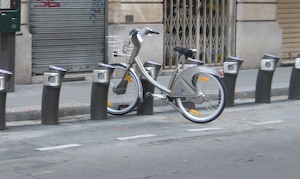…as Michael proves rather frequently using his mobile phone. I think this is splendid, for example.
Category Archives: General
It’s the histogram that counts…
[pun intended :-)]
John has a pointer to this great idea.
And the ‘picture-hidden-within-a-picture’ concept reminded me of a not-so-distant craze… do you remember how we all went cross-eyed a few years back looking at autostereograms?
Just for nostaligia, here’s a nice horse and here’s an animated one – a swimming shark.
A corker of a good idea
This is very clever….
Prof Richard Wiseman has written a book called Quirkology: The Curious Science of Everyday Lives. As part of the publicity – and as a stroke of marketing genius – he’s been releasing some great YouTube videos.
This is “Corkology”:
A month later, to coincide with the book’s release, he released a clip showing how it was done.
Even more impressive, I think, is the Colour-changing Card Trick:
There are more videos on the Quirkology site.
These have been all over YouTube, but I managed to miss them. I came across Richard Wiseman’s work through the (rather good) Skepticality podcast.
Velib’

Michael and I were in Paris in July, just a few days after the launch of the Velib’ scheme (Vélo Liberation) – which provided bicycles for public rental at hundreds of ‘stations’ around the capital. We didn’t get a chance to try one, though I’ve used a similar facility in Copenhagen before. The Paris scheme works partly because it was funded and managed by JCDecaux in exchange for control of large amounts of advertising space, and partly because users need to provide a credit card-based €150 deposit to be able to hire one.
Anyway, apparently it’s been a huge success, with 10,000 bikes deployed and people using them for 100,000 journeys per day.
Ken Livingston, are you listening?
There’s more about the scheme here and here, and many other successful operations are running in other cities around Europe.
Ten years ago in Cambridge, of course, we had the Green Bike Scheme, which has passed into local legend – almost into mythology, because even if you lived in the city at the time you might have missed it. 300 unclaimed bicycles from the police pound were painted green and deposited at special stands around the town with the idea that people would just pick them up at one place and drop them off at another. Well, they got the first half right. All of them were stolen within the first day or two. I lived in the centre of Cambridge at the time and never even saw a Green Bike, let alone rode one. The special stands were quietly removed a little while later.
Perhaps, though, in some way, we played our part in the success of such schemes in other parts of the continent, by illustrating how not to do it…
HDMI, DVI, DisplayPort are irrelevant
 That, at least, is the verdict of this post on The Inquirer.
That, at least, is the verdict of this post on The Inquirer.
The technology created by my pals over at DisplayLink is getting ever-increasing publicity, if the size of the Google Alerts landing in my inbox each morning are anything to go by! And this is all good stuff.
One of the things that inspired me, when we started DisplayLink, was a feeling that that this technology was inevitable. The speed of general-purpose data networks was increasing very much faster than the resolution of displays, or the capabiity of the human visual system, which is essentially a constant. At some point, we realised, there would be no need for dedicated video connections like DVI because general-purpose networks would be cheaper, more flexible, and fast enough. We started Ndiyo and DisplayLink because we worked out that with 100Mb/s ethernet and USB 2.0, they were already fast enough for almost everything.
With 1Gb/s ethernet and USB 3.0, they’ll be fast enough for pretty much anything. And the networking world won’t stop there.
This doesn’t mean that graphics cards will go away. Many people, especially games players, will still want them for performance reasons. But you won’t need them for electrical reasons – to drive a particular type of signal over a particular kind of connector. VGA and DVI will go the way of the Centronics printer port. So graphics cards, whether standalone or built in to the motherboard, will become optional.
One of the things that excites me most about this is the fact that almost any device with a processor will soon be able to display a user interface on a decent-sized screen, if you care to plug one in. If you’re frustrated by the limitations of the user interface on your answerphone, your photocopier, your home alarm system, you’ll be able to plug in a 15″ or 17″ LCD and get a more sophisticated version. It makes sense because the manufacturer of the device concerned won’t have to build in a graphics chip, a framebuffer, or a VGA connector.
I started playing with this kind of thing when I worked on the VNC project at ORL/AT&T. It’s great to see the DisplayLink guys making it a reality.
Scantily Scandanavian
Sometimes I really think I ought to move to Sweden.
Would you like a courier’s career?
My statistic for the day comes from this week’s Economist:
An average day for a UPS driver in America involves 150 destinations
Avast there, me hearties!
Arrrh! How many of you landlubbers knew that it was International Talk Like A Pirate Day, then?
Of course, I learned everything I needed to know about pirates from Captain Pugwash, a wonderful children’s TV series written and drawn by my (distant) cousin, John Ryan. If you were unlucky enough to have missed it your youth in the 50s, 60s, or early 70s, you can enjoy it again today through the magic of YouTube…
I have a couple of the original drawings used in the Pugwash series at home somewhere. They were a bit like a pop-up book – the movement of the characters’ arms etc was done by moving cardboard tabs which emerged at the side of the drawing, and it was an unusual technique when first done because it was filmed ‘live’ rather than using stop-frame animation. I must get them framed…
Radio silence
I’d like to apologise to regular readers for the slightly lower rate of posting here recently. I’m in the middle of raising an angel funding round for my new startup and, as anyone who’s tried this before will know, it can be quite time-consuming, especially if you’re trying to run the business at the same time!
But never fear, Status-Q is alive and well, even if the status of Q is ‘a little more frazzled than usual’!
Oh, and if you might be interested in investing in the latest exciting new Cambridge venture then do let me know. 🙂 Things are going well, but we may still have a slot or two open…
Watch this space…
Google Chocks Away!
I’ve just been flying around the English Lake District.
Not in reality, sadly, but using a cool new flight simulator which is hidden in the latest version of Google Earth. It leaves something to be desired in terms of the realism of the flight controls, but it’s not bad, and I don’t know of any others that will let me fly over Catbells, across Derwent Water and up over Ashness Bridge.
I crashed somewhere near Watendlath. Mind you, if you have to come to a sticky end, I can’t think of a nicer place to do it…
England’s Green and Pleasant Big Blue
 I was invited to give a talk on Ndiyo, CamVine and DisplayLink at IBM Hursley yesterday. It was a first for me – I hadn’t been there before – but it must be a nice spot to work.
I was invited to give a talk on Ndiyo, CamVine and DisplayLink at IBM Hursley yesterday. It was a first for me – I hadn’t been there before – but it must be a nice spot to work.
Just outside a picturesque Hampshire village you turn off the road and go up a long drive through beautiful grounds to the campus. It’s centred around a magnificent 18th-century house, and though this is rather dwarfed now by the extensive modern buildings which are home to the nearly three thousand IBM employees there, it must be very pleasant to stroll through the gardens at lunchtime. And I doubt many other technology campuses have their own cricket pitch.
It was also the first time I’ve given a technology talk in a former ballroom! I met some great people and had good discussions. But we stopped short of dancing.
Photoshopping
David Hopkin sent me this rather nice picture:

It originally comes, apparently, from Worth1000.com, a site which I found appallingly difficult to navigate but which has large numbers of examples of what you can do with Photoshop. They’re of rather varied quality, but many are rather fun.
© Copyright Quentin Stafford-Fraser
Recent Comments